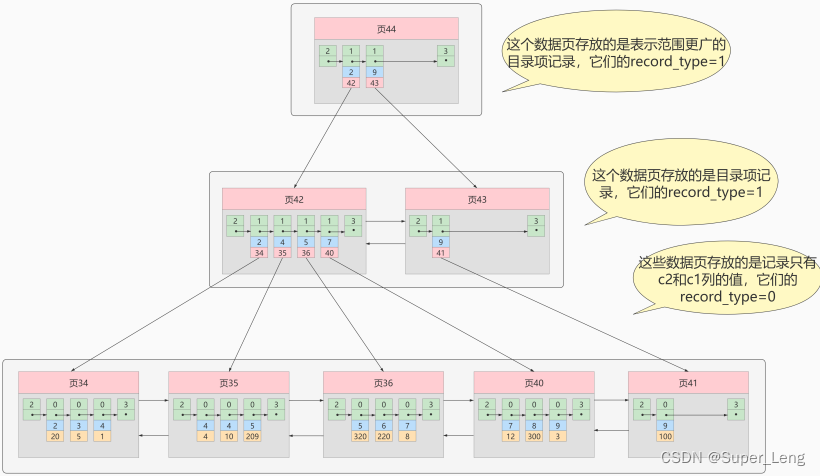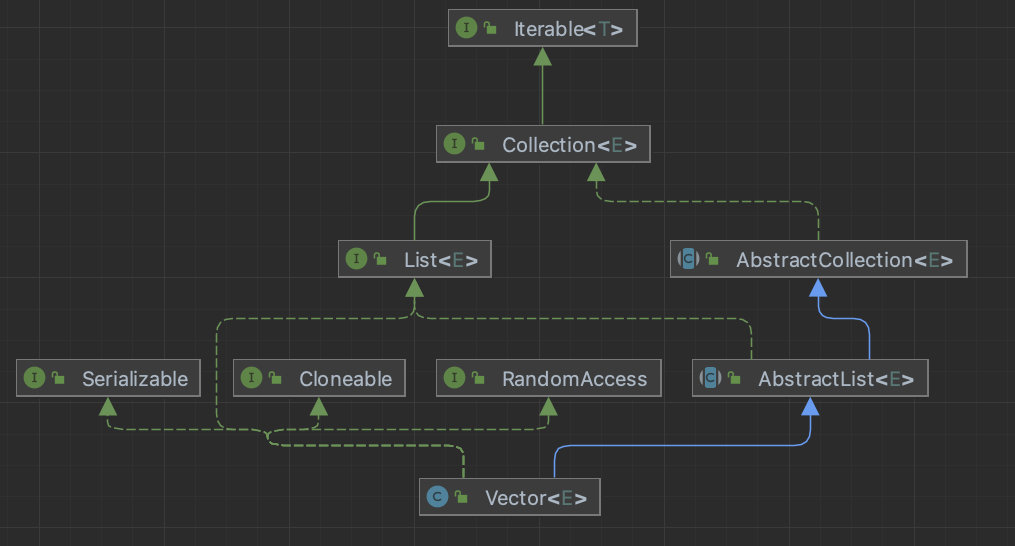📣 📣 📣 📢📢📢
☀️☀️你好啊!小伙伴,我是小冷。是一个兴趣驱动自学练习两年半的的Java工程师。
📒 一位十分喜欢将知识分享出来的Java博主⭐️⭐️⭐️,擅长使用Java技术开发web项目和工具
📒 文章内容丰富:覆盖大部分java必学技术栈,前端,计算机基础,容器等方面的文章
📒 如果你也对Java感兴趣,关注小冷吧,一起探索Java技术的生态与进步,一起讨论Java技术的使用与学习
✏️高质量技术专栏专栏链接: 微服务,数据结构,netty,单点登录,SSM ,SpringCloudAlibaba等
😝公众号😝 : 想全栈的小冷,分享一些技术上的文章,以及解决问题的经验
⏩当前专栏:JUC系列
读写锁
Synchronized存在一个性能问题就是不同读取之间互斥,我们想要实现的最好效果是可以做到读和读互不影响,写的时候只有一个线程能写
解决方案 : ReadWriteLock。
案例代码
package rwLock;
import java.util.HashMap;
import java.util.Map;
import java.util.concurrent.locks.ReadWriteLock;
import java.util.concurrent.locks.ReentrantReadWriteLock;
/**
* @projectName: JUC
* @package: rwLock
* @className: rwLockDemo
* @author: 冷环渊 doomwatcher
* @description: TODO
* @date: 2022/3/2 16:29
* @version: 1.0
*/
public class rwLockDemo {
public static void main(String[] args) {
MyCache myCache = new MyCache();
for (int i = 1; i <= 5; i++) {
final int temp = i;
new Thread(() -> {
myCache.put(temp + "", temp + "");
}, String.valueOf(i)).start();
}
for (int i = 1; i <= 5; i++) {
final int temp = i;
new Thread(() -> {
myCache.get(temp + "");
}, String.valueOf(i)).start();
}
}
}
/**
* 自定义缓存类
* 加锁
* */
class MyCache {
//存放数据的集合
private volatile Map<String, Object> map = new HashMap<>();
// 存 写
public void put(String key, Object value) {
System.out.println(Thread.currentThread().getName() + "写入" + key);
map.put(key, value);
System.out.println(Thread.currentThread().getName() + "写入完毕");
}
// 取 读
public void get(String key) {
System.out.println(Thread.currentThread().getName() + "读取" + key);
Object o = map.get(key);
System.out.println(Thread.currentThread().getName() + "读取" + "");
}
}
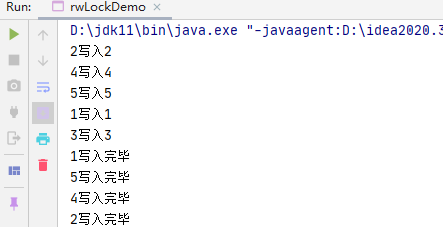
可以看到这并不是我们想要的效果,这个时候我们需要加锁
ReadWriteLock读写锁 分别有
readLock()读锁
writeLock()写锁
使用方式除了相比lock细化的一些其他没有变化
读写锁代码实例
思路理解 :
独占锁(写锁)
共享锁(读锁)
public class rwLockDemo {
public static void main(String[] args) {
//MyCache myCache = new MyCache();
MyCacheLock myCache = new MyCacheLock();
for (int i = 1; i <= 5; i++) {
final int temp = i;
new Thread(() -> {
myCache.put(temp + "", temp + "");
}, String.valueOf(i)).start();
}
for (int i = 1; i <= 5; i++) {
final int temp = i;
new Thread(() -> {
myCache.get(temp + "");
}, String.valueOf(i)).start();
}
}
}
class MyCacheLock {
//存放数据的集合
private volatile Map<String, Object> map = new HashMap<>();
//读写锁的区别, 更加细粒度的控制
ReadWriteLock readWriteLock = new ReentrantReadWriteLock();
// 存 写
public void put(String key, Object value) {
//加入写锁
readWriteLock.writeLock().lock();
try {
System.out.println(Thread.currentThread().getName() + "写入" + key);
map.put(key, value);
System.out.println(Thread.currentThread().getName() + "写入完毕");
} catch (Exception e) {
e.printStackTrace();
} finally {
//释放写锁
readWriteLock.writeLock().unlock();
}
}
// 取 读
public void get(String key) {
readWriteLock.readLock().lock();
try {
System.out.println(Thread.currentThread().getName() + "读取" + key);
Object o = map.get(key);
System.out.println(Thread.currentThread().getName() + "读取" + "");
} catch (Exception e) {
e.printStackTrace();
} finally {
readWriteLock.readLock().unlock();
}
}
}
输出效果就达到了,先写且只有一个写,之后随意读
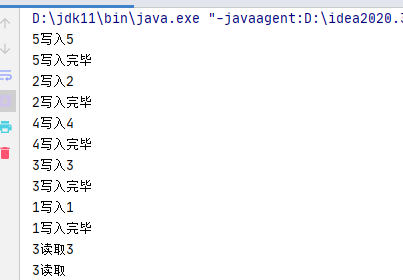
阻塞队列
阻塞队列简介
什么是阻塞队列,我们要分开来理解
阻塞: 等待前面的走了才能加入新的
队列: 先进来的,先出去
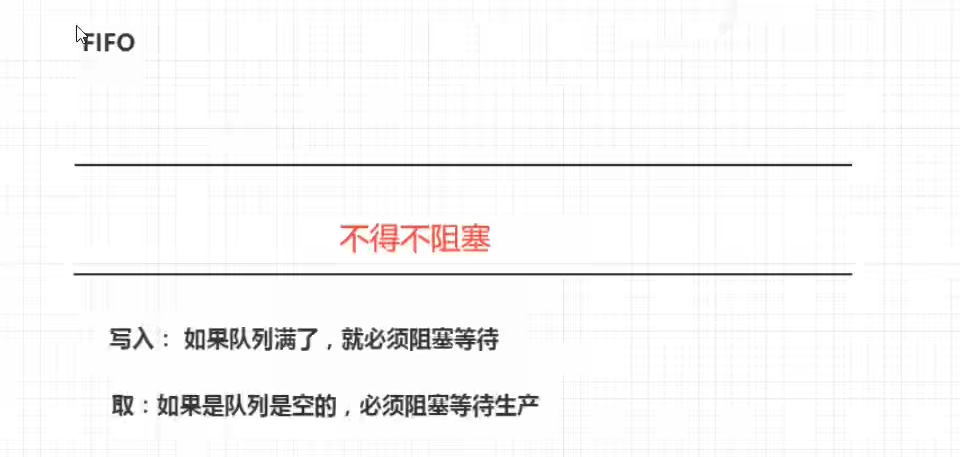
阻塞队列 在jdk文档中的 解释
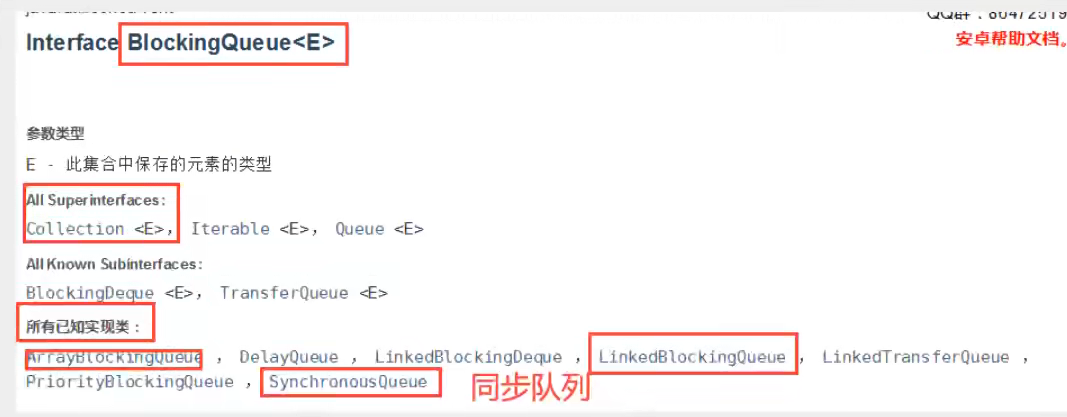
队列接口
我们学习的BlockingQueue也是实现类之一
什么时候我们会使用 阻塞队列
多线程 , 线程池 用的相对的多一点
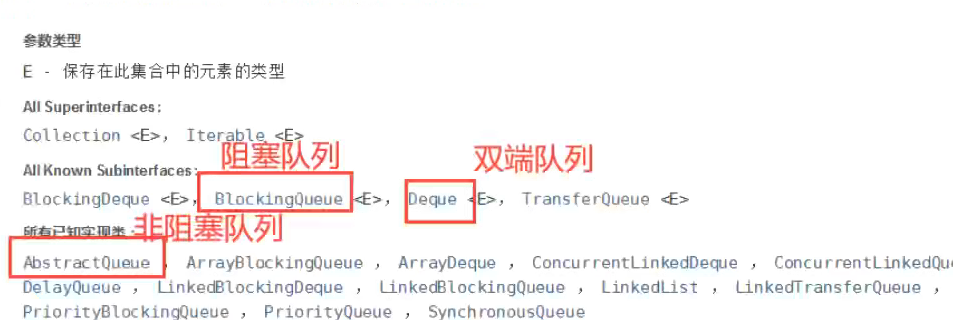
队列的类关系图
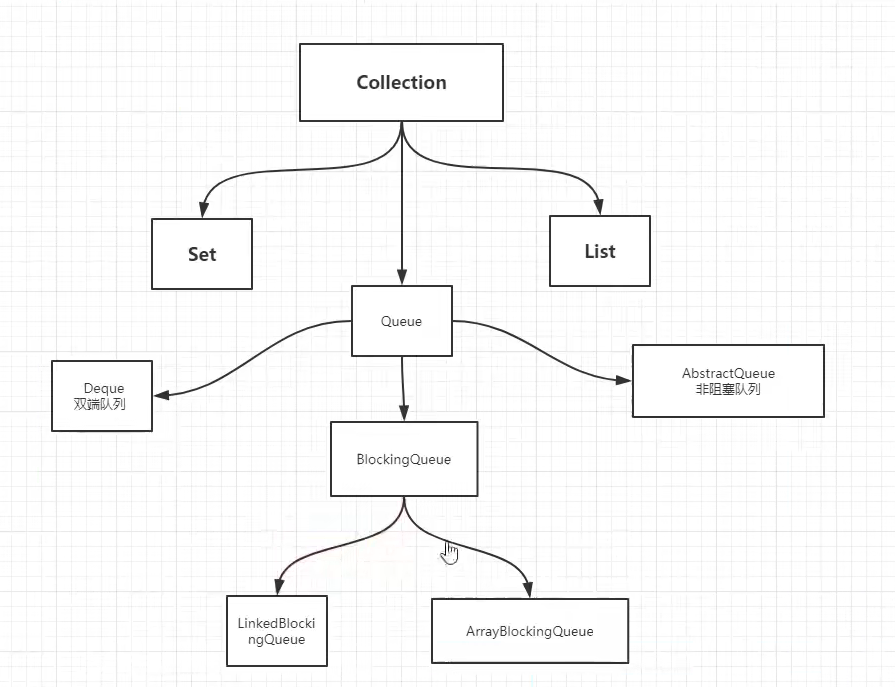
阻塞队列相对的四组api
-
抛出异常api
/** 会抛出异常的 * java.lang.IllegalStateException: Queue full 会抛出队列已经满了的异常 * java.util.NoSuchElementException 过多移除异常 * */ public static void test1() { ArrayBlockingQueue blockingQueue = new ArrayBlockingQueue<>(3); System.out.println("===============多过加入================"); System.out.println(blockingQueue.add("a")); System.out.println(blockingQueue.add("b")); System.out.println(blockingQueue.add("c")); 此时的队列长度为 3 如果我们此时加入 第四个会怎么样,抛出队列已经满了的异常 //System.out.println(blockingQueue.add("b")); System.out.println("===============过多移除================"); System.out.println(blockingQueue.remove()); System.out.println(blockingQueue.remove()); System.out.println(blockingQueue.remove()); System.out.println(blockingQueue.remove()); } -
不会抛出异常api
public static void test2() { ArrayBlockingQueue blockingQueue = new ArrayBlockingQueue<>(3); System.out.println("===============多过加入================"); System.out.println(blockingQueue.offer("a")); System.out.println(blockingQueue.offer("b")); System.out.println(blockingQueue.offer("c")); //返回false System.out.println(blockingQueue.offer("d")); System.out.println("===============过多移除================"); System.out.println(blockingQueue.poll()); System.out.println(blockingQueue.poll()); System.out.println(blockingQueue.poll()); //返回null System.out.println(blockingQueue.poll()); } -
阻塞等待 api
/* 一直等待 阻塞 * */ public static void test3() throws InterruptedException { ArrayBlockingQueue blockingQueue = new ArrayBlockingQueue<>(3); blockingQueue.put("a"); blockingQueue.put("b"); blockingQueue.put("c"); //blockingQueue.put 队列没有位置了 一支阻塞 //blockingQueue.put("d"); System.out.println(blockingQueue.take()); System.out.println(blockingQueue.take()); System.out.println(blockingQueue.take()); //m没有这个元素一直等待 System.out.println(blockingQueue.take()); } -
超时等待 api
/*等待 等待超时*/ public static void test4() throws InterruptedException { //队列的大小 ArrayBlockingQueue blockingQueue = new ArrayBlockingQueue<>(3); blockingQueue.offer("a"); blockingQueue.offer("b"); blockingQueue.offer("c"); //等待,如果设置时间还没有空位置。否则结束 blockingQueue.offer("d", 2, TimeUnit.SECONDS); System.out.println("======================"); blockingQueue.poll(); blockingQueue.poll(); blockingQueue.poll(); //等待,如果设置时间还没有找到。否则结束 blockingQueue.poll(2, TimeUnit.SECONDS); }
| 方式 | 抛出异常 | 有返回值 | 阻塞等待 | 超时等待 |
|---|---|---|---|---|
| 添加操作 | add | offer | put() | offer() |
| 移除操作 | remove | poll | take() | poll() |
| 判断队列首元素 | element | peek |
同步队列
特性
同步队列,SynchronusQueue 同步队列 和其他的 BlockingQueue不一样 SynchronusQueue不存储元素
put了 一个元素 必须先从里面拿出来,否则是不能再put进去值
代码实例
public class synchronusQueueDemo {
public static void main(String[] args) {
BlockingQueue<String> blockingQueue = new SynchronousQueue<>();
new Thread(() -> {
try {
System.out.println(Thread.currentThread().getName() + "put 1");
blockingQueue.put("1");
System.out.println(Thread.currentThread().getName() + "put 2");
blockingQueue.put("2");
System.out.println(Thread.currentThread().getName() + "put 3");
blockingQueue.put("3");
} catch (InterruptedException e) {
e.printStackTrace();
}
}, "T1").start();
new Thread(() -> {
try {
TimeUnit.SECONDS.sleep(2);
System.out.println(Thread.currentThread().getName() + "=>" + blockingQueue.take());
TimeUnit.SECONDS.sleep(2);
System.out.println(Thread.currentThread().getName() + "=>" + blockingQueue.take());
TimeUnit.SECONDS.sleep(2);
System.out.println(Thread.currentThread().getName() + "=>" + blockingQueue.take());
} catch (InterruptedException e) {
e.printStackTrace();
}
}, "T2").start();
}
}
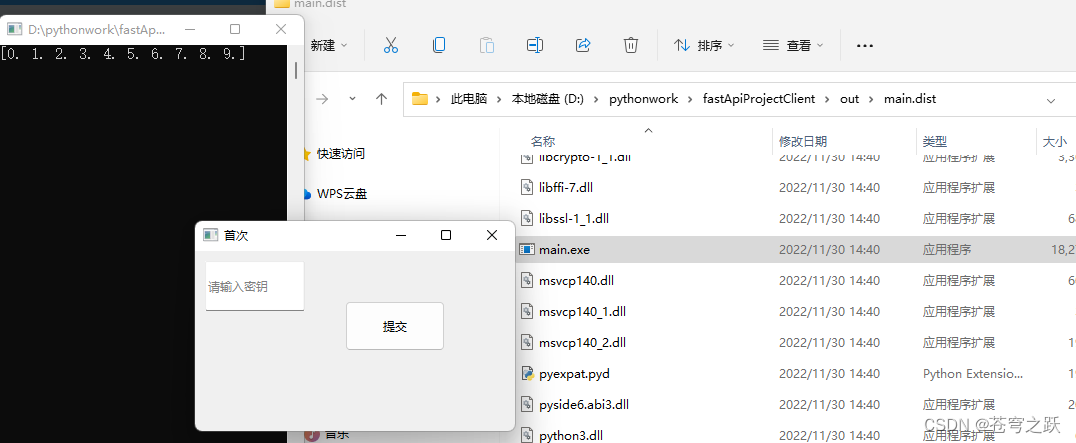





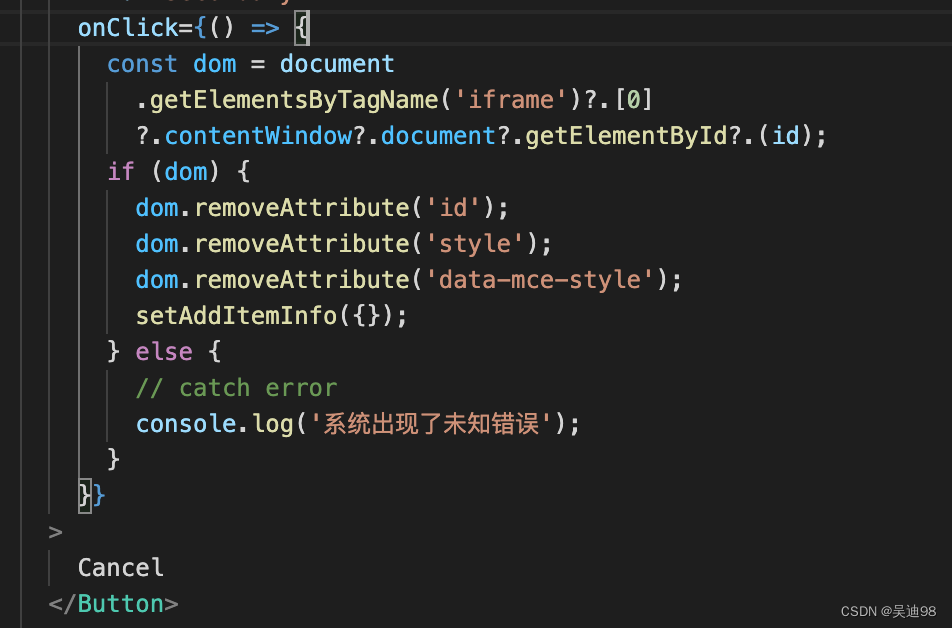
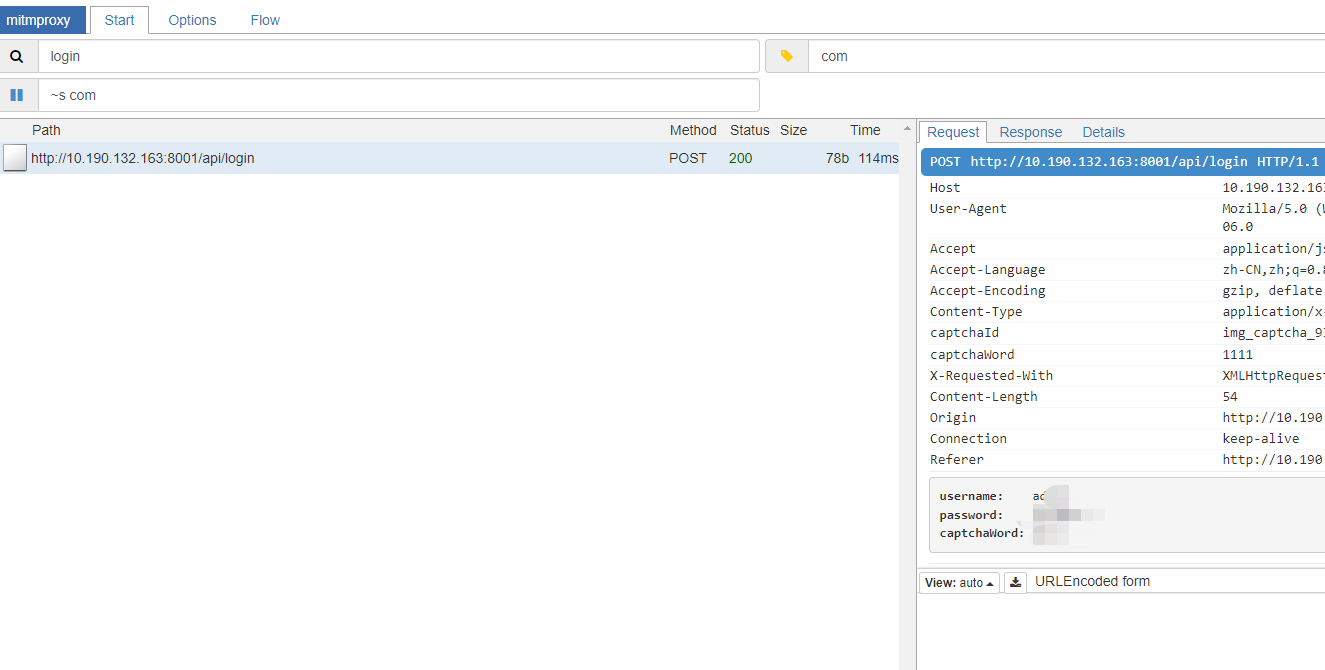





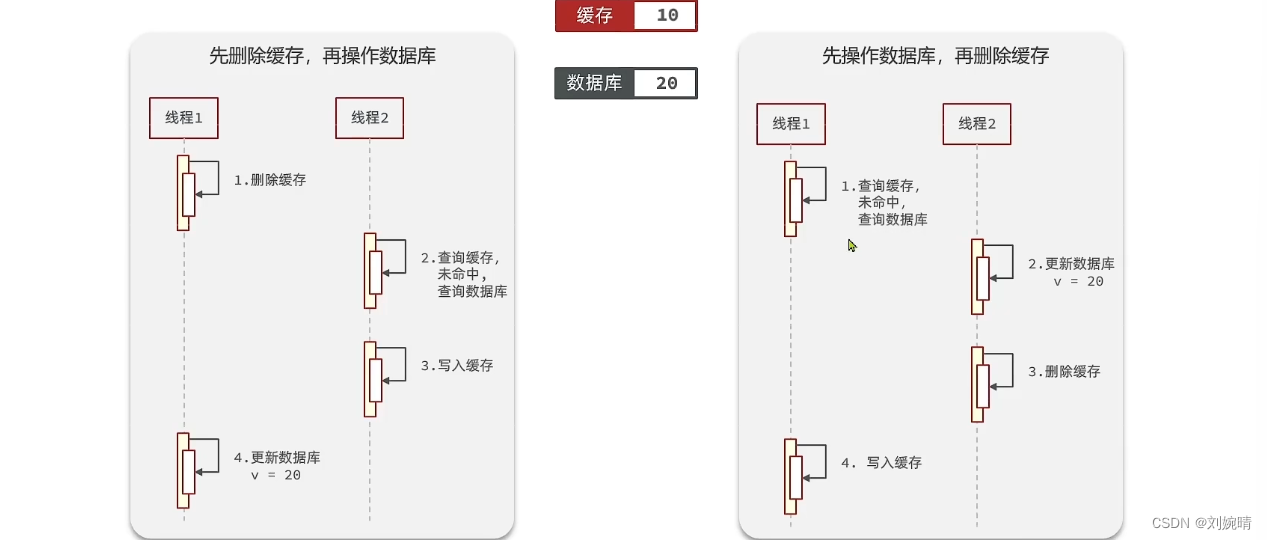
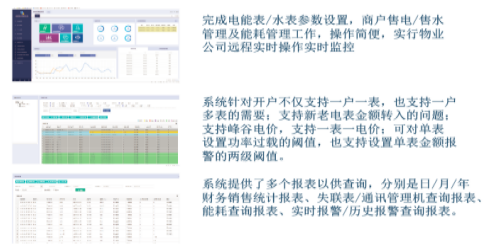


![[附源码]SSM计算机毕业设计医学季节性疾病筛查系统JAVA](https://img-blog.csdnimg.cn/9fa399eaf4d047f18eb360014e1e9b4e.png)
